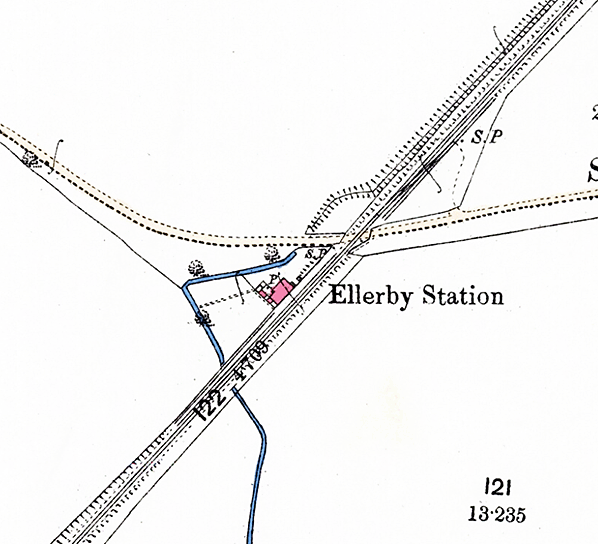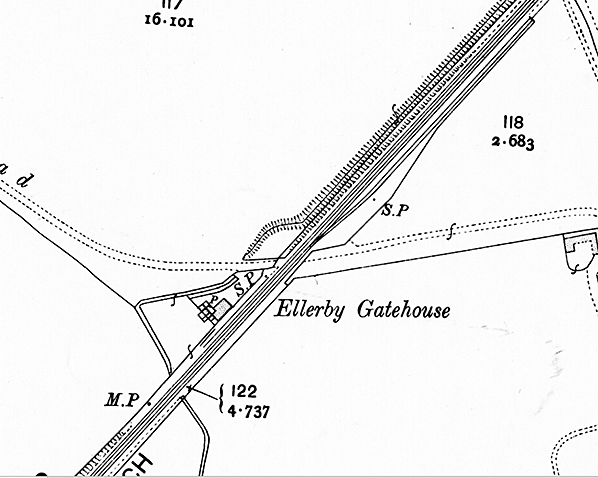
Station Name: ELLERBY (1st station)[Source:
Mark Dyson]
 Ellerby first station on an unknown date but probably in the 1950s.
Photo from John Mann collection.  
1891 1:2,500 OS map. A single platform is shown with the station house which also acted as the booking office. A single siding is seen on the up side to the north of the level crossing.

1910 1:2,500 OS map. The station has now closed and the station house is now the Ellerby gatehouse. It would have had that job as well when the station was open. The siding was relaid a few yards to the east when the line was doubled.
 1927 1:2,500 OS map. The siding has been shortened is now named although by this date it was officially known as the Weelerby West siding. OS are often late catching up with name changes.
old1.jpg)
Ivatt 4MT class 2-6-0 No. 43077 hauls a southbound goods train past the first Ellerby station in the 1950s or early 1960s. This loco was new in October 1950 and was built at Darlington Works. She was withdrawn from Manningham shed on 21 May 1957 and cut up at Drapers in Neptune Street goods yard in Hull in August that year. Although closed to passengers since 1902 the platform remains clean and tidy with flowers and bushes. The crossing keeper is seen at the end of the platform.
Copyright photo by Jim Sedgwick 9.jpg)
Ellerby first station looking north-west in June 1979, 14 years after the track was lifted.
Photo from the KDH Archive 8.jpg)
Ellerby first station looking south-east in June 1979. The timber railway fencing is still in place at the back of the platform and appears in good condition.
Photo from the KDH Archive 2.jpg) Ellerby first station building in May 2003.
Photo by Bruce Robinson 3.jpg)
Ellerby first station looking south-east from the site of the level crossing in July 1999. A public footpath runs along the track.
Photo
by William Arthur, reproduced from Wikipedia under creative commons licence
5.jpg)
Ellerby first station in January 2009. The extension to the building is obvious from the change in colour of the brick work. The single storey part of the building although resembling the single storey part of the original building is new.
Photo by Mark Dyson 6.jpg)
Ellerby first station looking north-east along the platform in January 2009. The fencing at the rear of the platform looks similar but has replaced the original fencing. The planks are wider and there is no spacing between them.
Photo Mark Dyson 7.jpg) Looking west from Skirlaugh Road at the first Ellerby station in January 2009.
Photo by Mark Dyson 10.jpg)
Looking north-east at the first Ellerby station in August 2012. The fencing seen in the 2009 picture had been moved to the front of the platform to provide additional privacy.
Photo
by Richard Wadston
 Home
Page Home
Page
|

thumb1.jpg)
thumb4.jpg)
